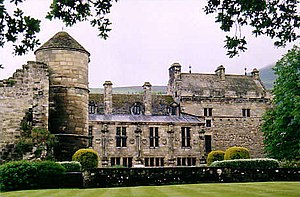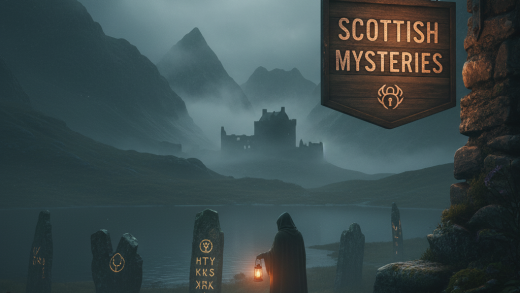David Stewart (Duke of Rothesay) was a pivotal figure in Scottish royal history, though his life was tragically short and ultimately politically fraught.

Here are the key details about him:
- Birth: 24 October 1378
- Death: 26 March 1402 (aged 23)
- Father: King Robert III of Scotland
- Mother: Annabella Drummond
- Titles:
- Earl of Carrick (1390)
- Duke of Rothesay (1398) – This was the first dukedom ever created in the Scottish peerage, specifically for the heir apparent to the Scottish throne. This title is still used by the heir apparent today (currently Prince William).
- Earl of Atholl (1398)
- Lord of Bute

Life and Significance:
- Heir Apparent to a Weak King: David was the eldest son and heir apparent of Robert III. Robert III was perceived as a weak and ineffective king, largely due to an injury and possibly a passive temperament. This meant that much of the real power in Scotland during his reign was wielded by other powerful magnates, particularly David’s uncle, Robert Stewart, Duke of Albany.
- Creation of the Dukedom of Rothesay (1398): At a general council in 1398, David was created the first Duke of Rothesay, along with his uncle Robert being made Duke of Albany. This was a significant moment in Scottish peerage, establishing the tradition of this specific dukedom for the monarch’s eldest son.
- Turbulent Character and Political Rivalry: David was known for his somewhat erratic and extravagant behavior, which often put him at odds with the more conservative elements of the Scottish nobility. He was involved in a complex political landscape dominated by the rivalry between his own supporters and those of his uncle, the Duke of Albany, who was effectively the de facto ruler of Scotland as Governor or Lieutenant.
- Marriage and Broken Engagements: David was engaged multiple times, reflecting the political alliances sought by the Crown:
- Initially to Elizabeth Douglas, daughter of the powerful Earl of Douglas.
- Then to a daughter of the Earl of March (George Dunbar). This engagement was later broken for political reasons, causing resentment from the Earl of March.
- He eventually married Marjory Douglas, daughter of Archibald Douglas, 3rd Earl of Douglas (known as “Archibald the Grim”), in 1400. This marriage was intended to solidify an alliance with the powerful Douglas clan.
- Mysterious Death at Falkland Palace (1402): David Stewart died under suspicious circumstances at Falkland Palace. He was supposedly imprisoned there by his uncle, the Duke of Albany, and the Earl of Douglas, ostensibly for “wantonness and riot.” The official story was that he died of dysentery, but it was widely believed that he was starved to death on the orders of his uncle.
- An inquest was held, which exonerated Albany and Douglas, but the circumstances of David’s death cast a long shadow over Albany’s reputation and highlighted the brutal power struggles within the Scottish royal family.
- His death left his younger brother, James (the future James I), as the new heir apparent.

David Stewart’s life is a tragic tale of a young prince caught in the dangerous political currents of medieval Scotland, a victim of the ambitions and rivalries of powerful nobles, including his own uncle.
Discover more from WILLIAMS WRITINGS
Subscribe to get the latest posts sent to your email.





🌞
thank you Stella x
Me: “I didn’t know the guy from the Eurythmics was Scottish nobility!”
Also Me: “Oh wait.”
hahhaha wrong Stewart mate but to be fair to you there are millions, thank you.